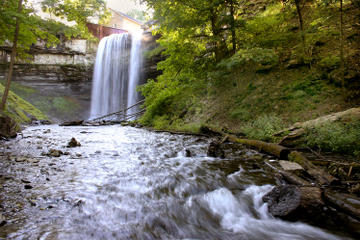St Catharines
TIME : 2016/2/22 10:08:21

St Catharines
Although frequently overlooked by visitors in a rush to get to Niagara Falls, St Catharines is Ontario’s sixth largest city. First settled by Loyalists in the 1780s, it played a major role in abolitionist activity in 1850 thanks to William Hamilton Merritt, who granted land to refugee slaves from the United States. In fact, St Catharines was one of the final Canadian stops on the infamous “Underground Railroad” (a series of secret routes and safe houses used by slaves) for refugee African-American slaves, and therefore remains an important place in Black Canadian history to this day. By the mid-1850s the town's population was about 6000, 800 of whom were of African descent. St Catharines has since evolved into a thriving community based on trade, commerce, manufacturing and telecommunications.
In terms of attractions, St Catharines is often nicknamed "The Garden City" due to the 1,000 acres (4 square kilometers) of parks, gardens and trails scattered around the city, including Montebello Park (designed by none other than Central Park’s Frederic Law Olmstead – it features 1,300 rose bushes in 25 varieties), Lakeside Park, Burgoyne Woods, Happy Rolph’s Bird Sanctuary and Walker Arboretum, to name a few. Because of a unique and rich soil, St Catharines is particularly conducive to fruit growing, including grapes; the town’s three wineries - Henry of Pelham Winery, Hernder Estates and Harvest Estates- have been known to produce award-winning wines. Other attractions include the historic buildings of St. Paul Street, the St. Catharines Museum, one of Ontario's oldest mills on an original site, Morningstar Mill and Port Dalhousie district.
Practical Info
St Catharines is located in Ontario, 112 kilometers (69 miles) south of Toronto. It is a popular pit stop for visitors heading to nearby Niagara Falls.
